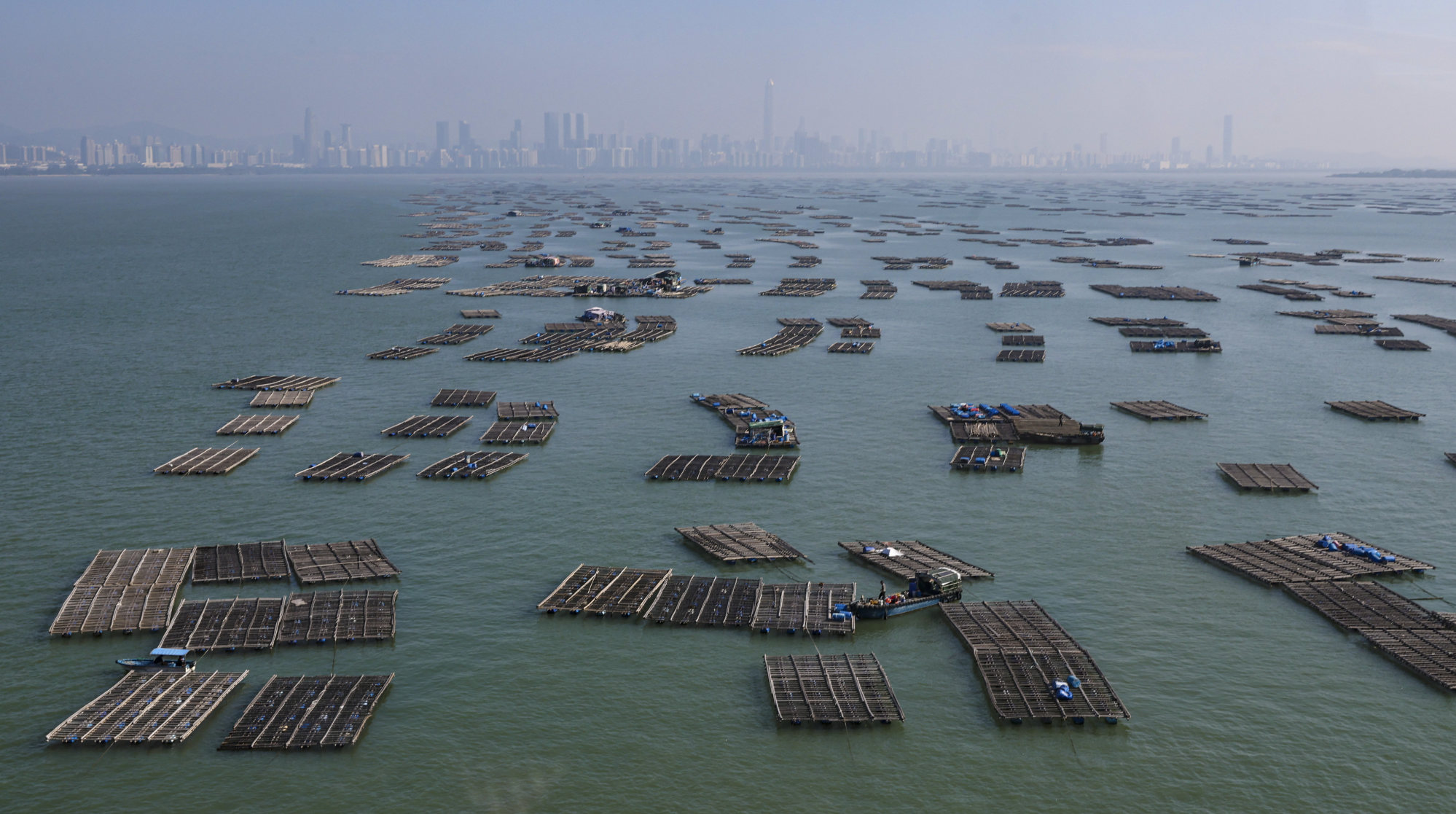
Call to mark 800 hectares in northwest Hong Kong as marine reserve to protect last stronghold of vulnerable seagrass species
- Beccari’s seagrass habitat in Pak Nai thought to house more than 60 per cent of local endangered horseshoe crab population and is wintering ground for black-faced spoonbill
- Alliance of green groups warns of threats from local tourism and invasive species
Hong Kong should designate 800 hectares (1,977 acres) in its northwest territory as a marine reserve before 2030 to protect the last stronghold in Asia of a vulnerable species of seagrass, an alliance of more than 30 conservation groups has proposed.
The Hong Kong Marine Protection Alliance said the seagrass in Pak Nai supported vast marine biodiversity, with the area comprising the city’s largest wetland habitat of mudflats, mangrove forests, seagrass meadows and oyster reefs.
The seagrass environment is believed to house more than 60 per cent of the local endangered horseshoe crab population, and is regarded as a key wintering ground for the endangered black-faced spoonbill.

The alliance said urgent protection was necessary as Pak Nai was under threat from local tourism and invasive species, but authorities had not taken any action to protect the area.
“When residents search Pak Nai on the internet, most results are about it being a hotspot for photography, watching the sunset and clam digging,” alliance spokesman Stan Shea Kwok-ho said. “However, its ecological value is often overshadowed.”
Tourists would step on the mudflats and unknowingly cause damage to the local ecology, he said.
Founded in August, the alliance consists of more than 30 environmental groups, academics and corporations, including the Nature Conservancy, the Maritime Museum and the Swire Group Charitable Trust. It aims to preserve the city’s waters and raise public awareness of marine conservation.
The Environment and Ecology Bureau on Friday told the Post it was considering developing a coastal protection park between Tsim Bei Tsui and Pak Nai, “with a view to proactively conserving the existing natural coastline and the ecosystem of inshore mangroves”.
The Development Bureau conducted a feasibility study on the development potential of the area in lockstep with proposals from late August by the Environment and Ecology Bureau to reserve sections of Tsim Bei Tsui, Lau Fau Shan and Pak Nai for the park.
Lam last year said in her policy address that she would set aside 145 hectares for conservation purposes, falling short of the 800 hectares suggested by the alliance.
Assistant professor Juan Diego Gaitán Espitia, a biostatistician at the University of Hong Kong’s Swire Institute of Marine Science, said Pak Nai had the most stable and largest population of Beccari’s seagrass across Asia. The institute is a member of the alliance.
“If you go to Indonesia or the Philippines, it’s totally extinct; you can’t find these plants any more,” he said. “If you go to India, Malaysia or Thailand, their populations are declining.”
In Pak Nai, the size of the area where the vulnerable seagrass species was located varied between 2.4 and four hectares, depending on the season, Gaitán Espitia said.
Native to the South China Sea and the Bay of Bengal, the Beccari’s seagrass is the smallest in its family known to science, with leaves only growing up to 5mm.
Research suggests it is a critical food source for horseshoe crabs, among other animals, and helps stabilise coastlines and sediments. The alliance also said the habitat it helped create could capture four times more carbon dioxide than other terrestrial vegetation given the same surface area.

But Gaitán Espitia expressed worry that habitat changes, such as land reclamation and water pollution, would threaten seagrass health.
“We look at how the seagrass is changing through time, and changes in the habitat use are affecting it,” he said.
Since 2020, the Nature Conservancy, Outdoor Wildlife Learning Hong Kong and Ocean Park Conservation Foundation have led volunteers and students to Pak Nai to remove an invasive plant known as the common cordgrass, once used for coastal erosion control.
Originating in southern England, its fast-spreading root system is now known for its ability to asphyxiate natural ecosystems by outgrowing native vegetation.
The Nature Conservancy has also restored more than 2,000 square metres (21,528 sq ft) of disused oyster farms since last summer, turning them into artificial oyster reefs to help build hiding places for marine life, cleanse seawater and slow the erosion of Pak Nai’s shoreline.
The group said globally, about 85 per cent of the existing native oyster reefs had been destroyed by human activities such as urban development and overharvesting.
Since 2009, alliance member Ocean Park Conservation Foundation has worked with City University to hold rearing programmes to release juvenile horseshoe crabs in Pak Nai.
Pak Nai is home to two of the world’s four such aquatic arthropod species: the endangered tri-spine horseshoe crab and the round-tailed horseshoe crab. The latter is so rare that scientific data has been too sporadic to determine its conservation status.

The alliance pointed out that only part of Pak Nai was listed as a site of special scientific value in the 1980s, while the rest of the area was under no legal protection.
It also warned that without statutory protection from the government, efforts made by conservation groups and the public were limited.
“A synergistic effect can only be achieved when authorities, society, environmental groups and others are working together,” alliance spokesman Shea said. “We hope Pak Nai can have better legal protection and management.”
Biologist Gaitán Espitia said conserving the “last reservoir” of the Beccari’s seagrass was a way to protect the biodiversity relying on it.
“The seagrasses we’re looking at are connected with everything here,” he said. “They are connected with the mangrove, the horseshoe crab and the oysters. The whole system is not about one species; it’s about multiple species all connected.”
